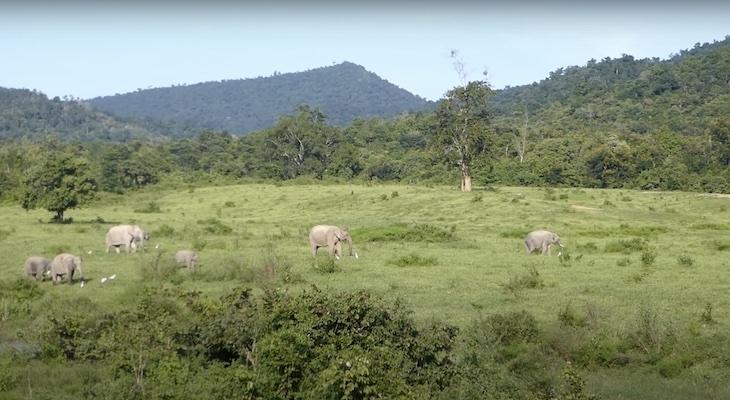A Day in the Frontline of Human-Wildlife Conflict
The sudden crack of a breaking branch in the distance interrupts the nightly symphony of cicadas and crickets in rural Thailand. Some might think it was just a strong gust of wind, or maybe a squirrel or bird, but I know what’s coming. I reach for my walkie talkie, press the side button — I notice there is still dirt under my nails from a day of field work — and state my location and, “They’re here.” The headlamp strapped to my forehead irritates the sunburn I got earlier, but it is the only source of light I have as I duck under the electric fence and walk into pitch darkness. As I pass a trench, barbed wire fencing, and spinning lights, I hear people howling, yelling and clapping before the explosions of several firecrackers echo through the night. The sounds are reminiscent of the Canada Day parties I can still remember after all these years, but I know these people are far from celebrating. We are in a conflict zone, and amidst an invasion.
An eruption of sound now comes from the other side. Branches break, crack, and snap as they crash through the forest, retreating from the explosions. The volume increases as they get closer to where I am stationed, and the nightly symphony reaches its crescendo before they suddenly stop. The forest is silent. Fixed on the spot where the noise ceased, my eyes strain pointlessly to see into the darkness. I am a safe distance away, armed with my headlamp, and desperate to identify what great force caused this chaos. I hold my breath, feel for the button on my headlamp, and illuminate the forest edge. I’m not met with a criminal, an intruder, or “the enemy” — but a herd of Asian elephants
This is human-elephant conflict (HEC). There are no winners, only losers, and both sides suffer similarly and equally because of it.
In the Thai regions where I work, elephants push down “permanent” barriers, drag logs onto electric fences to cross without getting shocked, change their routes to avoid passing motion sensored alarms, and slowly fill deep trenches with dirt, then work together to cross, leaving no member of the herd behind. While barriers and obstacles may be effective initially, they do not address the reason why the elephants are venturing into human-dominated landscapes in the first place. As the number of HEC hotspots rises in Thailand, sustainable solutions that benefit both humans and elephants are urgently needed.
With our team at Bring The Elephant Home and as part of my master’s research with Miami University, we’re investigating whether planting alternative crops can minimize the economic impact from crop depredation. We’ve called it the Tom Yum project, as many of the ingredients of Thailand’s famous tom yum soup - lemongrass, chili, lime, galangal - happen to be unpalatable to elephants. The community members involved with the Tom Yum project inspire me every day as they brainstorm and develop new crop species to trial, new organic farming techniques to implement, and new products to create. Many might think these farmers would sooner wish the elephants were gone than accept having to change their own practices and behaviour, but this community is driven by a shared vision of coexistence between humans and elephants.
I can’t imagine a world without elephants — an internationally admired symbol of strength, wealth, and wisdom. A life without elephants does not only mean these remarkable creatures would disappear from Asia’s lush forests and Africa’s vast savannas. Elephants are everywhere, from national flags to souvenir stands, corporate logos to cartoon characters, religious scriptures to the heart of every young student and volunteer who has told me that elephants are their favourite animal. Somehow, losing elephants means losing something bigger than the world’s biggest land mammal. I cannot think of anything else to which I would rather dedicate my life, than hearing the nightly symphony, uninterrupted by explosions, feeling peace throughout a former conflict zone, and seeing human-elephant conflict become human-elephant coexistence.





